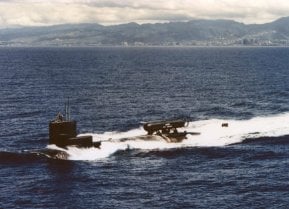Greece Has a Massive Fleet of Fighter Jets Because of 1 Word
The Hellenic Air Force, with around 227 fighter jets, boasts one of NATO's largest air fleets, even surpassing the UK and France individually. Greece operates a robust mix of aircraft: F-16s, including Block 70/72 "Viper" upgrades, Dassault Rafales, Mirage 2000-5s, and F-4E Phantoms.
Turkey Is the Reason: The Hellenic Air Force, with around 227 fighter jets, boasts one of NATO's largest air fleets, even surpassing the UK and France individually. Greece operates a robust mix of aircraft: F-16s, including Block 70/72 "Viper" upgrades, Dassault Rafales, Mirage 2000-5s, and F-4E Phantoms.

-Future plans include adding 20 F-35A Lightning II jets with an option for 20 more. By 2030, Greece aims for a streamlined fleet of around 200 jets, focusing on the F-35A, F-16 Viper, and Rafale.
-This sizeable fleet is strategic, addressing regional threats and ensuring eastern Mediterranean security amid tensions with neighboring Turkey.
Why Greece’s Air Force is Larger Than the UK’s and France’s – Here’s What It Flies
Here at the National Interest, a recent article discussed why Greece has more tanks than the British and French militaries combined. For a country of 10 million people, a fleet of 850 active main battle tanks is quite large.
Did you know that the Hellenic Air Force has one of the largest fleets of fighter jets in NATO, with a total of approximately 227 fighter aircraft? That makes the Hellenic Air Force larger than both the Royal Air Force and the French Air Force (individually, not combined).
So, what aircraft does the Hellenic Air Force fly? What aircraft will it fly in the future? And why does it have to have so many fighter jets to begin with?
The Hellenic Air Force
Today, the Hellenic Air Force has approximately 227 fighter jets in its inventory. Specifically, Athens has 152 F-16 Fighting Falcon (Block 72, Block 52+/ADV, Block 50, Block 30), 33 F-4E Phantom, 24 Dassault Mirage 2000-5 Mk2, and 18 Dassault Rafale F3R aircraft.
Starting with the F-16 Fighting Falcon, the Hellenic Air Force is currently modernizing its fleet. Athens is working with Lockheed Martin to upgrade scores of F-16s to the Block 70/72 “Viper” configuration, the most advanced version of the venerable fighter jet out there. In total, 84 F-16 fighter jets will be upgraded to the Block 70/72 “Viper” configuration by 2027. Moreover, the Hellenic Air Force is also upgrading 38 Block 50 aircraft to Block 52+/ADV from the spare parts of the Block 52+/ADV aircraft getting upgraded to “Vipers.”

Moving on to the Dassault Rafale, the Hellenic Air Force has 18 aircraft in its inventory. The Rafale, alongside the F-16 Block 70/72 “Vipers,” is the most advanced fighter jet in Greece’s fleet.
The Hellenic Air Force expects to get one Rafale F3R each month until January. These are brand new aircraft and will create a squadron of 24 fighter jets. However, Athens plans on buying more Rafales in the future to have two battle-ready squadrons. To achieve this, the Hellenic Air Force is in discussions with its French counterpart and Dassault for the transfer of the 24 Dassault Mirage 2000-5 Mk2 and the purchase of an additional 12 new Rafales. Athens’ Mirage 2000-5 fleet was ill-maintained during the austerity of the 2008 economic crisis.
Although the aircraft are capable interceptors, their availability isn’t the best, and the Hellenic Air Force is looking for ways to offload them for the most benefit. The end goal would be two Rafale squadrons of 18 aircraft each.
Finally, the F-4E Phantom is serving in a surveillance and tactical bombing role, but they will be moving off the active fleet soon as the Hellenic Air Force introduces the next type of aircraft.
Looking into the future, Greece recently signed a contract with Lockheed Martin for the delivery of 20 F-35A Lightning II stealth fighter jets; Athens has the option to purchase an additional 20 aircraft in the future.
By 2030, the Hellenic Air Force wants to have approximately 200 combat-ready fighter jets divided among three types of aircraft: F-35A Lightning II, F-16 Block 70/72 “Viper,” and Dassault Rafale F3R.
As to why the Hellenic Air Force needs so many combat aircraft, the answer is simple: Turkey and the threat it poses to Greece and the wider security of the eastern Mediterranean.
About the Author
Stavros Atlamazoglou is a seasoned defense journalist specializing in special operations and a Hellenic Army veteran (national service with the 575th Marine Battalion and Army HQ). He holds a BA from Johns Hopkins University and an MA from the Johns Hopkins School of Advanced International Studies (SAIS). His work has been featured in Business Insider, Sandboxx, and SOFREP.
Image Credit: Creative Commons and Shutterstock.


